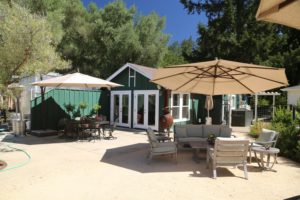
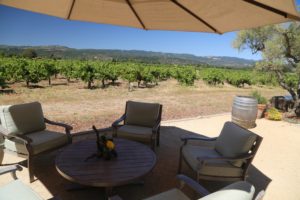 CHASE Cellars is a boutique winery located almost at the base of the western hills of Napa Valley (the Mayacamas mountains) on Sulphur Springs Road just south west of the town of St. Helena. Most visitors won’t discover CHASE Cellars on their first few trips to the valley – the winery is not located along the busy “wine strip” along Highway 29 and for many years, the winery sign was simply a magnet attached to their mailbox – they are not setup for large numbers of visitors and that is part of the appeal of a visit here.
CHASE Cellars is a boutique winery located almost at the base of the western hills of Napa Valley (the Mayacamas mountains) on Sulphur Springs Road just south west of the town of St. Helena. Most visitors won’t discover CHASE Cellars on their first few trips to the valley – the winery is not located along the busy “wine strip” along Highway 29 and for many years, the winery sign was simply a magnet attached to their mailbox – they are not setup for large numbers of visitors and that is part of the appeal of a visit here.
The family history is rich and influential and in the state of California, dates back to the gold mining days of the 1850s. William Bowers Bourn I, a wealthy merchant from Massachusetts came to California from New England following the discovery of gold in the Sierra foothills in 1848. He was a 6th generation descendant of Jared Bourn who most likely arrived on the east coast by ship in 1630. He opened the extremely successful Empire Gold Mine in the foothills of the California Sierra Nevada mountains and was a longtime director of Fireman’s Fund Insurance Co. In 1874 he died of a gunshot wound which was initially ruled a suicide. His wife requested his body be exhumed and the resulting finds declared his death accidental. Unfortunately the records from the postmortem examinations were destroyed during the April 1906 San Francisco earthquake and fire. In 1940, Bourn’s grave was moved to the St. Helena Cemetery and is where his body is now buried.
Both he and his son William Bowers Bourn II left their mark on San Francisco and the mining industry. Bourn II invested heavily into what would become the water supply for San Francisco (he was president of Spring Valley Water Company) and also developed the young city’s first water and gas utilities. In 1905 he became president of the San Francisco Gas and Electric Company and coordinated a merger with California Electric Company. The name of the new company was Pacific Gas and Electric, known as PG&E and is still in existence. He was also active in San Francisco originations including as president of both the Pacific Union Club, the University Club and the San Francisco Symphony Orchestra. He contributed both time and money towards the planning and hosting of the Panama Pacific International Exposition in San Francisco in 1914 and 1915.
Empire Mine, Grass Valley
Bourn II invested in and ultimately became the majority owner of one of the largest and most successful hard rock mines in California, the Empire Mine located in Grass Valley (today the Empire Mine State Historic Park). Between the years of 1850 and when it closed in 1956, remarkably the Empire Mine produced 5.8 million ounces of gold and attracted employees from around the world. Bourn’s cousin George Starr was the mine manager and played an integral role in its operations over the years.
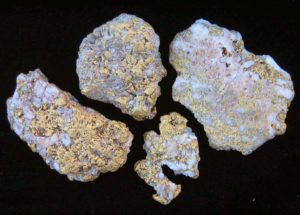
Example of sizable California gold nuggets – from our private collection from our mining claim, “the mooch”
Another highlight of the museum is a scale model of the entire Empire Mine as well as gold ore samples from select mines in the region. And from the months of May through October volunteers dressed in period clothing offer a glimpse back in time with tours of the Bourn Cottage and live demonstrations of various mining related activities including work in the Blacksmith Shop. An open air Mineyard features numerous pieces of old mining equipment.
The entire park is 853 acres and includes 14 miles of hiking trails – one can easily spend several hours here.
Greystone Cellars, St. Helena
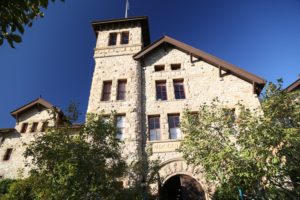 In another important piece of local history – William Bourn II along with business partner Everett Wise financed and oversaw the construction of the famous Greystone Cellars building located just north of the town of St. Helena. Bourn later bought out Wise’s interests.
In another important piece of local history – William Bourn II along with business partner Everett Wise financed and oversaw the construction of the famous Greystone Cellars building located just north of the town of St. Helena. Bourn later bought out Wise’s interests.
This iconic stone building was completed in 1888 at the cost of approximately $250,000 (a huge sum of money in those days). It was the first winery built in California to use electricity. Formerly the home of the California Wine Association (the winery was used to produce sacramental wine during Prohibition) and later the Christian’ Brothers, it now houses the Culinary Institute of America. Due to its history, and prominent size, it is the most remarkable stone winery building in all of the Napa Valley. This massive stone building is often used for special wine tasting events, houses a culinary shop, a small restaurant, an historic barrel room and also Brother Timothy’s impressive corkscrew collection (over 1,000 pieces in the collection).
The building’s massive cornerstone was placed on June 15, 1888 (but was never marked); it was located in 1988 and eventually moved on display near the main entrance. A number of keepsakes were placed on the cornerstone at that time including seven bottles of wine (among them a Charles Krug 1885 Riesling, a Beringer 1884 Burger and a Bourn & Wise 1887 Sauvignon Vert). A copy of the St. Helena Star and several other newspapers were also included – the Star article reported, “the health of Messrs. of Bourn and Wise was drunk …”.
Several of the bottles were broken during the excavation of the cornerstone – these and the intact bottles along with part of an original newspaper can still be seen as part of the enclosed display.
Filoli Estate, Woodside California
Bourn II was also responsible for one of the great estates on the other side of the San Francisco Bay Area, Filoli (Fight, Love, Live) – the name paying homage to Bourn’s favorite credo, fight for a just cause; love your fellow man and live a good life.
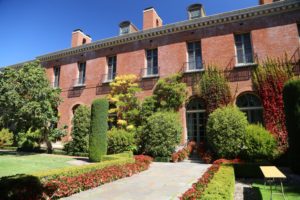 This sprawling 654-acre estate located just off of the 280 freeway in Woodside (today the property is a California Historical Landmark and listed on the National Register of Historic Places and is open to the public). This remarkable estate features beautiful gardens and the centerpiece of the property, the 54,000+ square foot Modified Georgian-Revival Filoli House. And of note, is the annual Vintage Affaire held on the estate every year in September since its inception in 1983 – this charity wine auction features a number of premium Napa wineries (and a few others from select parts of California) with the proceeds used to help the non-profit Vista Center for the Blind and Visually Impaired.
This sprawling 654-acre estate located just off of the 280 freeway in Woodside (today the property is a California Historical Landmark and listed on the National Register of Historic Places and is open to the public). This remarkable estate features beautiful gardens and the centerpiece of the property, the 54,000+ square foot Modified Georgian-Revival Filoli House. And of note, is the annual Vintage Affaire held on the estate every year in September since its inception in 1983 – this charity wine auction features a number of premium Napa wineries (and a few others from select parts of California) with the proceeds used to help the non-profit Vista Center for the Blind and Visually Impaired.
In 1936 Bourn passed away at Filoli; along with his wife and two children, he is buried on the grounds. In November 2023 the estate was used for meetings between U.S. President Joe Biden and Chinese president Xi Jinping. For more information, visit: www.filoli.org
Bourn Mansion, San Francisco
This beautiful brick home in San Francisco’s Pacific Heights neighborhood was built for William Bowers Bourn II and his wife Agnes Moody in 1896. Architect Willis Polk designed the mansion; he was responsible for several other Bourne owned properties including the Filoli Estate. This is San Francisco Historical Landmark #38.
The exterior of the mansion is brick, built in the style of an English townhouse. The interior contains 27 rooms. And it is located directly next door to the Italian consulate. It was significantly renovated/restored in 2012 and today it is a private residence.
Other Bourn II built properties or places we still have to visit are the Villa Eden Del Mar in Pebble Beach (for his daughter Maude) and the Sunol Water Temple.
Muckross House/Killarney National Park, Ireland
And the family’s influence was international – in 1911 William Bourn II purchased the magnificent 65-room Muckross Mansion as a wedding present to his only child, daughter Maud and her husband Arthur Rose Vincent (an Irish senator). Bourn was already familiar with this mansion as he had stayed here previously while on vacation in Ireland. After Maud died in 1929, William gifted the estate and its accompanying 13,000 acres to the Republic of Ireland. Originally called the Bourne-Vincent Memorial Park, this became the first national park in the Republic of Ireland – today known as Killarney National Park. Over time with additional land donations, the park has grown in size to now 25,000 acres.
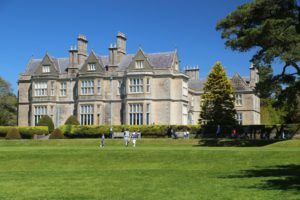 The park is about a 90-minute drive from the closest international airport in the city of Cork. The drive is pleasant and passes through several small towns. The park was designated a Biosphere Reserve in 1982 as part of a UNESCO program. It his home to the largest section of remaining natural woodland in the entire country. In addition to several prominent mountain peaks contained within its borders, the MacGillycuddy’s Reeks are nearby, the highest mountain range in Ireland.
The park is about a 90-minute drive from the closest international airport in the city of Cork. The drive is pleasant and passes through several small towns. The park was designated a Biosphere Reserve in 1982 as part of a UNESCO program. It his home to the largest section of remaining natural woodland in the entire country. In addition to several prominent mountain peaks contained within its borders, the MacGillycuddy’s Reeks are nearby, the highest mountain range in Ireland.
The Muckross House and gardens are one of the park’s primary attractions (including numerous large rhododendron plants which generally are in bloom in early to mid-May). The property also features an arboretum with a sizable plant collection including many specimens from the southern hemisphere. Muckross translates to “pig peninsula’ in Irish – referring to the wild pigs that use to roam the region. This stately mansion was built in 1843 for the Herbert family – Henry and his wife Mary. Henry’s family originally settled this land in the 17th century.
There is no charge to visit or park on the grounds – visitors are free to explore the beautiful gardens and landscaping. The gardens were created in anticipation of Britain’s Queen Victoria in 1861 (she only stayed overnight in the house for 2 nights). The house has been open to the public since 1964; guided tours of the house are offered daily (for a small admission) from March through October and offers a unique look back in time with visits to many of the mansion’s 65 rooms. About 70% of the furnishings are original to the home. There are excellent views of Muckross Lake (Ireland’s deepest lake) from several of the upper rooms.
The park can be explored by car or by foot (on numerous hiking trails). A tribute to history and an enjoyable experience are the horse pulled carriages – these offer rides for visitors throughout select parts of the park (near the Muckross House). A short hike or drive from the Muckross House, and well worth visiting is the Torc Waterfall. For more information, or to plan a visit, see: www.killarneynationalpark.ie
Muckross House Exterior
Muckross House Interior
Muckross House, Gardens & Traditional Farms, Ireland
Killarney National Park
After first visiting the Napa Valley in 1866, William Bourn I and his wife Sarah Esther Chase Bourn purchased their St. Helena property in 1872 as a getaway to escape the cold foggy miserable San Francisco summers (in those days with slow and limited transportation, one needed to spend more time here rather than just using the property as a weekend getaway). Sarah’s father, Captain George Chase lived on the property for some time (he settled in San Francisco in 1849 and became one of the largest ship owners in that city) – he died in the family home here in 1878. William and Sarah grew grapes on the property until phylloxera wiped out their vineyard – which was then replanted in 1903 on phylloxera resistant rootstock. Their original site was 120 acres (they paid $15,000 for this); today the property is 45 acres divided into three 15-acre blocks each owned by a different family member.
And the nearby Marciano Estate (winery) was originally under ownership of the Bourn Family from 1872 until the late 1950s; they called this property the Madroño estate. The Bourns built an impressive home with Victorian towers and locally quarried stone – unfortunately this home burned down in 1888. The family built a second home in 1903/1904 which is still standing on the Marciano Estate. The Bourn family sold this property to the Christian Brothers who built a small chapel and a dormitory until they in turn sold.
Which brings us to contemporary times; current owner of CHASE Cellars Katie Hayne Simpson is the great-great granddaughter of William and Sarah. She grew up near Rio Vista (the San Joaquin Delta) on a 250-acre ranch/pear orchard. Today she lives on the CHASE Cellars property in the old white cottage (dates from 1862) where her great-great grandparents used to stay when they were visiting. The name Hayne comes from Katie’s great grandmother (one of William and Sarah’s 6 children) who married William Alston Hayne. Katie’s brother Andy created the CHASE Cellars brand in 1998 and she took over the operations in 2012.
For those looking for more details into the rich historical past of the Bourn family, the book The Last Bonanza Kings is an excellent read.
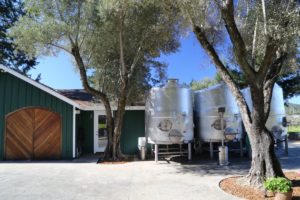
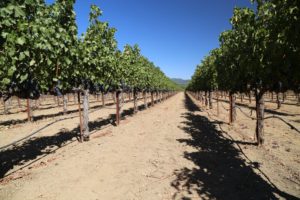
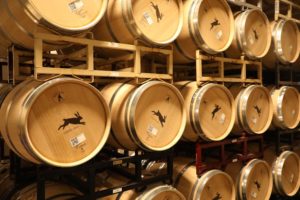 CHASE Cellars focuses on Zinfandel which comes from the surrounding historic Hayne Vineyard. The majority of the vines on the property are over 115 years old. It is always neat to walk out among old head pruned vines in vineyards of this age – mostly because the Napa Valley does not have many of these old vineyards left. Because of the vine age, the girth of the trunks are rather large – often with sizable holes in the middle and parts of the trunks are often covered with thick moss (even in the dry months of the year).
CHASE Cellars focuses on Zinfandel which comes from the surrounding historic Hayne Vineyard. The majority of the vines on the property are over 115 years old. It is always neat to walk out among old head pruned vines in vineyards of this age – mostly because the Napa Valley does not have many of these old vineyards left. Because of the vine age, the girth of the trunks are rather large – often with sizable holes in the middle and parts of the trunks are often covered with thick moss (even in the dry months of the year).
Over the years many vineyards in the Napa Valley have succumbed to various diseases and or have been pulled out in favor of more economically viable varietals, namely Cabernet Sauvignon which typically retails for much higher prices then old ‘mix blacks’ vineyards. Several decades ago, Katie’s mother Sarah was encouraged to pull out the vines and replant to Cabernet Sauvignon. Fortunately, she ignored this advice, rather opting to use budwood from the existing vines to fill in any missing vines that had died over the years. As a result, about 25% of the vineyard is planted to newer vines.
The Hayne Vineyard vines are all dry farmed (other than young vines which are watered by hand to get them established) and have been managed by 5 generations – descendants of the Bourn family. And the vineyard is listed in the Vineyard Historical Society, a group that promotes and helps bring awareness to select historical vineyards planted prior to 1960. In tribute to the Bourn Family, prominent grower Andy Beckstoffer owns and maintains the nearby Bourn Vineyard.
In 2014, winemaker Russell Bevan was hired to oversee both the Hayne Vineyard and the winemaking operations. Russell has a led a varied life – he earned his master’s in philosophy from Gonzaga University, worked in Minneapolis selling dental equipment, wrote a syndicated column which was published in the Wine Spectator and then became a self-taught winemaker with his first vintage in 2005. Russell has worked with a number of iconic Napa Valley based vineyards over his career, getting his start with Kal Showket (who used to own Showket Vineyards in Oakville before selling to Peter Michael). Russell identifies a select group of winemakers who he has been influenced by including Napa Valley’s long-time winemaker, Philip Togni.
Russell maintains one significant requirement for all vineyards he works with: he must maintain full control of the farming practices. His personality is considerable – he is a straight shooter, a doer, someone who thinks outside of the box and who has brought his own style of vineyard management and wine making to the Napa Valley. In contemporary Napa Valley wine making, he is leading the charge – working with some of the best vineyards in the valley and producing wines that are opulent and energetic and rich and well-textured, both on the bouquet and palate.
The attention in the vineyard is meticulous, and also during harvest. Grapes picked from younger vines are kept separate and fermented separately from the older vines as are grapes picked from the north side versus the south side of the vines. The vineyard is in a very good neighborhood, one of Napa’s most historically rich vineyard sites. Beckstoffer’s well regarded Dr. Crane Vineyard is nearby as is his Bourn Vineyard. And also nearby is the Old Crane vineyard used by the Crane Assembly, one of Napa’s two oldest verified still producing vineyards.
The tasting room is located directly next to the winery and production site, all of which are surrounded by 140+ year old olive trees. Tastings are held outside overlooking the vineyards in the shadows of their olive grove or in their cozy modern tasting room (which was elegantly remodeled several years ago). Typically visitors will begin their tasting with with a light wine followed by their Zinfandel, a Cabernet Sauvignon and perhaps a Petite Sirah.
Select Wines
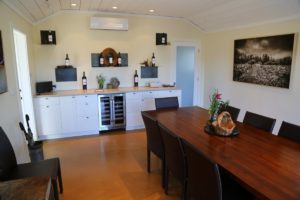
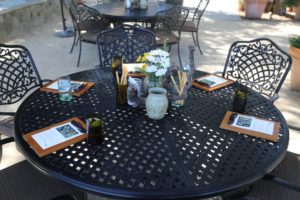
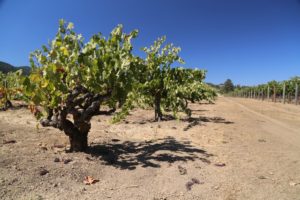 Whites/Rosé
Whites/Rosé
The 2023 CHASE Cellars Viognier, Sonoma County was sourced from a vineyard owned by the Kunde family. This wine was aged primarily in stainless steel for 15 months with also aging occurring in one neutral French oak puncheon barrel. This bottling is medium gold in color; its bouquet is highly aromatic, revealing aromas of stone fruits including yellow peaches and nectarines, tropical fruits including mango, guava and papaya, baked apples, honeycomb, some floral undertones of star jasmine and honeysuckle and some tangerine and mandarin zesty notes. As the wine continues to evolve it opens to butterscotch and vanilla. If its scents were a singer it would be Andrea Bocelli performing an inspirational rendition of The Perfect Symphony with singer Ed Sheeran. Fruity across the palate, there are flavors of yellow peaches, apricot, pineapple, papaya, mango, ginger and warm honey. The acidity is balanced but not overly bright. The mouthfeel sports a lightly creamy, almost waxy and rounded texture. Lingers flavorful with a persistent fruit-filled finish. Pair with something that incorporates some type of chutney or fruit glaze – perhaps turkey with a peach or apricot glaze.
The 2023 CHASE Cellars Zinfandel Rosé, Hayne Vineyard. This wine is often made by saignee, but this year it was made direct to press; it was produced from a healthy second crop. It is medium to deep copper in color; the bouquet offers a light candied berry character with scents of raspberry, strawberry, watermelon jolly rancher and cranberry. And additional notes of blood orange, hibiscus and vanilla. The minerally palate offers a creamy texture with some noticeable weight – its feel is like velvet or running one’s fingers across the fur of a young Miniature Schnauzer. This wine reveals flavors of white nectarine, blood orange, pomegranate, raspberry, strawberry, Rainier cherry and red plum. The finish persists with a lingering intensity of flavor, uncommon for a rosé. It is built more seriously than a pool and patio sipper, and crafted with food in mind. Perhaps pair this with a Cajun-style seafood boil with sausage and corn.
Zinfandel
The CHASE wines are single varietal wines while the BOURN wines are blends.
The 2023 CHASE Cellars Hayne Vineyard, Heritage Vine Zinfandel is deep ruby and nearly opaque; ripe, fruit forward and with plenty of accompanying secondary aromas from its oak aging, this wine offers scents of blackberry, dark cherry, boysenberry, mocha, dark chocolate, espresso and vanilla, pipe tobacco and toasted cedar. As the wine evolves in the glass some of the baking spices and oak influenced characteristics become more prominent. Ripe with some jammy attributes, on the palate there are flavors of plum jam, cherry cordial, blackberry and boysenberry. Its ripeness is tempered somewhat by its balanced and bright acidity. The tannins are grainy and gravelly in texture and linger with a dark pepper spice, toasted cedar, dried herbs and a hint of dried tobacco leaf on the long-lasting fruit filled finish. Juicy, tangy and savory. Pork short ribs covered in a spicy dry rub and a BBQ please. Bring this wine to a party; it will certainly be the star, especially among Zinfandel enthusiasts.
The 2015 CHASE Cellars Hayne Vineyard Zinfandel shows an appealing bouquet revealing a union of both dessert spices and lively fruit aromatics. It sports notes of Graham cracker, mocha, toffee, cloves and cinnamon along with blackberry. Superbly balanced across the palate, it reveals flavors of blackberry, boysenberry and ripe plum. The fine-grain tannins are supple and seamlessly integrated into the long finish. This wine is simply a pleasure to drink and is so in its youth but has the ‘stuffing’ to age well for a number of years.
The 2009 CHASE Cellars Hayne Vineyard Zinfandel is medium ruby in color; the sweetly fruited bouquet reveals aromas of dried plums, dried mission figs, fig Newton, raspberry, cherry and baking spices, including cinnamon and clove. While ripe, the bouquet still has an element of freshness, 15 years post vintage at the time of our tasting. Its energetic acidity has carried this wine very well over the years. On the palate there are flavors of red cherry, currant, cranberry and pomegranate. The red fruited and lightly tart finish lingers with well tumbled tannins leaving a very subtle drying character on the front of the palate. We wish all Californian Zinfandels would age this well. Pair with grilled halibut.
A Reserve Zinfandel is also made; this wine is from a barrel selection with the best lots exclusively from the old vines.
Cabernet Sauvignon
After sourcing Cabernet Sauvignon from the Stags Leap District for a number of years, CHASE Cellars produced their first Cabernet Sauvignon from their family property in 2018, from the younger trellised vines.
The 2023 Chase Cellars Bourn Luck is 33% Cabernet Sauvignon from the estate with 33% Cabernet Franc and 33% Merlot coming from Sugarloaf Vineyard in the hills south east of the city of Napa. Two barrels of each variety were used in this bottling. This wine is deep ruby and opaque; ripe with a pretty union of both fruit and barrel influences, this wine smells like dark raspberry, red cherry, Santa Rosa plum, cardamom, chocolate and a light note of toasted oak, but it is nowhere near crossing into the territory of being oaky. This wine tastes like blackberry jam, dark cherry, ripe dark plum and persistent layers of mocha and bakers’ chocolate. The plush tension between texture, fruit and barrel combined with a soft acidity – makes for a crowd friendly bottling. The finish lingers with both grape and oak tannins. Their texture is broadly coating with a tumbled and gravely character.
Desert
CHASE Cellars also produces a Solera style Zinfandel dessert wine called Finalé – a delicious non-vintage Zinfandel Port-styled wine. The wine we tried was not syrupy at all as the grapes were picked as normal and were not left hanging on the vine for weeks after the regular harvest. The sugar does not dominate; this is a highly balanced, smooth and easy to drink wine of this style. Start with a few sips of this and soon the bottle will be empty and you will be horizontal on the couch, possibly passed out. This wine is produced in extremely small quantities only as 375 ml bottles.
—
The logo is simply a jack rabbit; the creative artist who designed their logo was inspired by walking through the Hayne Vineyard in the evening and seeing numerous jack rabbits bounding through the vineyard – in part being chased by his dog. Two iterations of a jack rabbit were created for their labels – one representing the single varietal wines and the other for the blended wines. True to concept, during several of our tastings here we have seen numerous jack rabbits hopping through the vineyard and tasting area – especially later in the afternoons.
Despite the pedigree of the property, the wines have been kept reasonably priced over the years. Production each year usually varies between 1,500 and in a large year, 2,000 cases. As of our latest update to this review, the wines are currently being produced at a state of the art custom crush winery located slightly south of the city of Napa. For more information, to schedule a tasting, to purchase wine or to join the Captain’s club (6 or 12 bottle allocation per year), visit: www.chasecellars.com
Hayne Vineyard
Hospitality






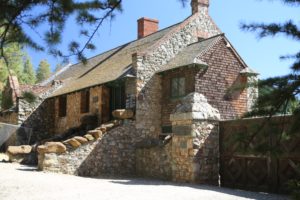
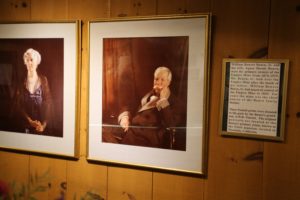
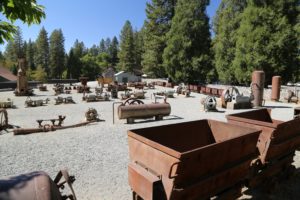
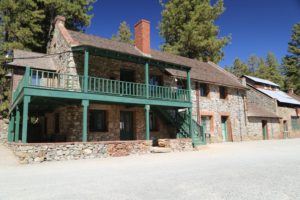
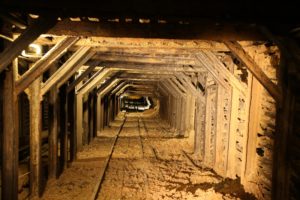
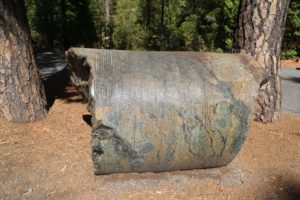
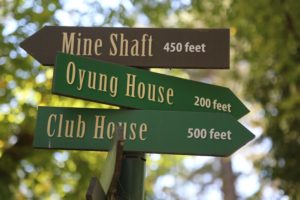
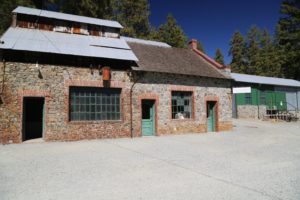
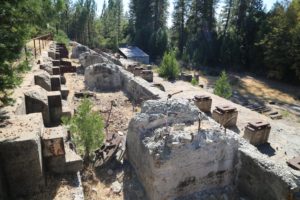
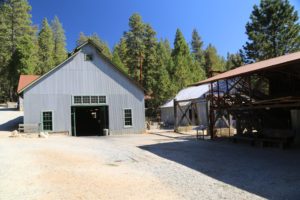
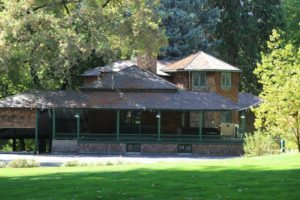
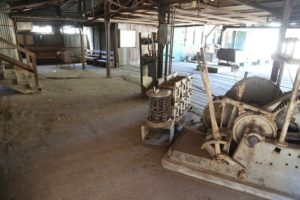
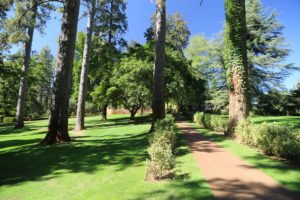
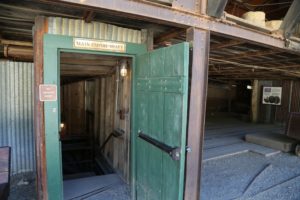
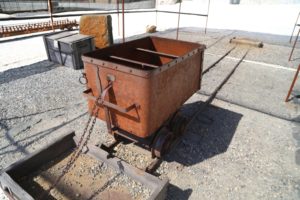
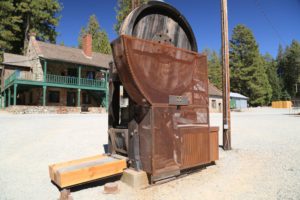
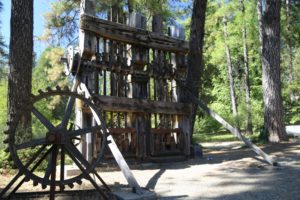
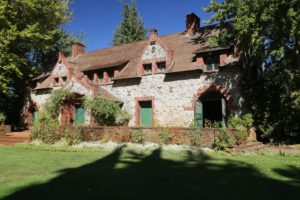
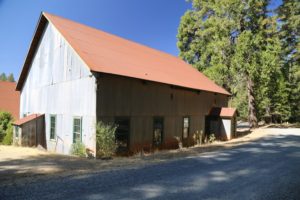
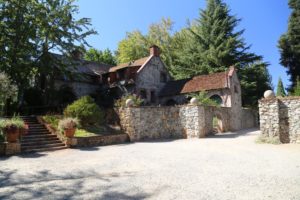
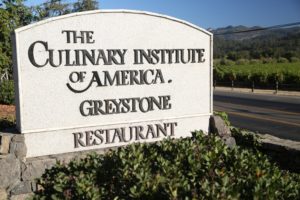
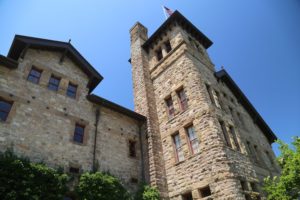
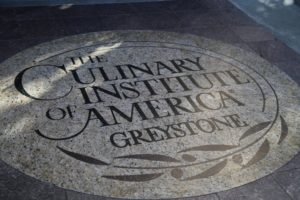
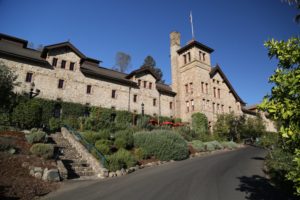
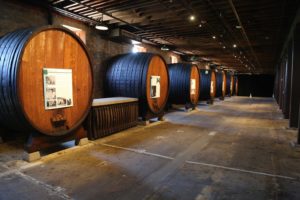
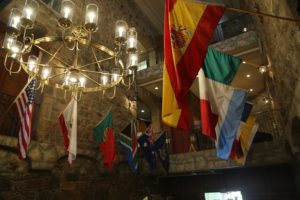
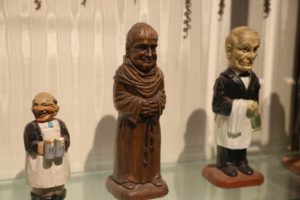
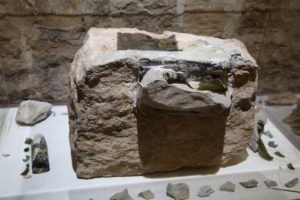
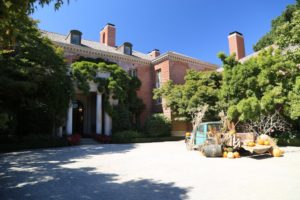
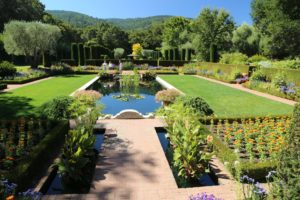
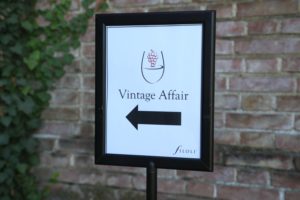
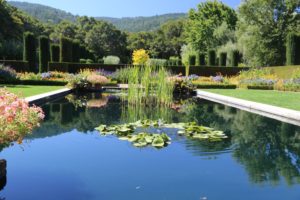
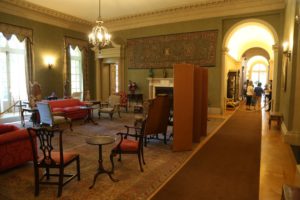
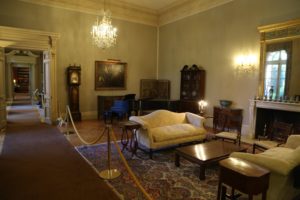
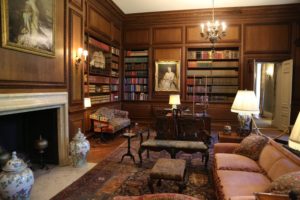
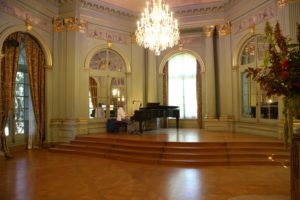
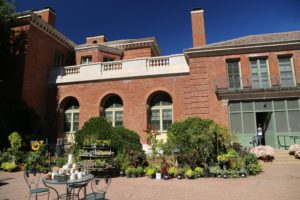
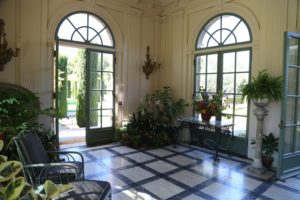
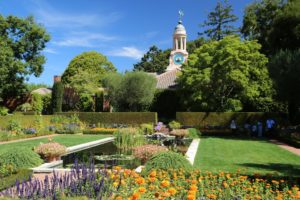
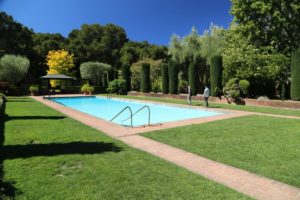
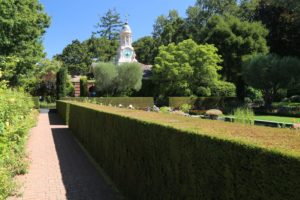
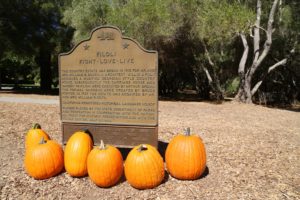
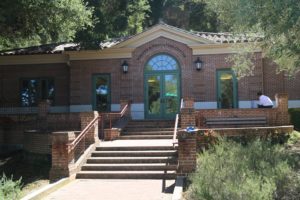
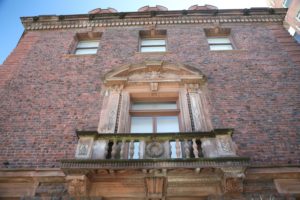
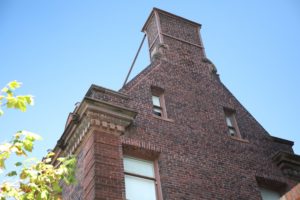
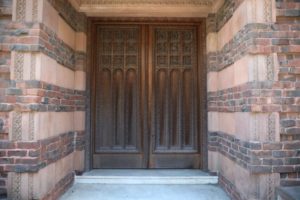
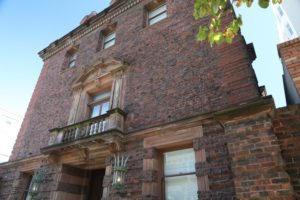
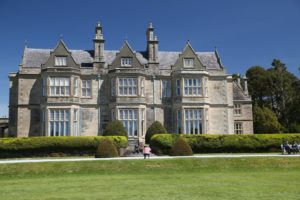
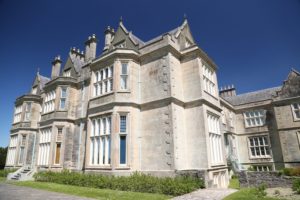
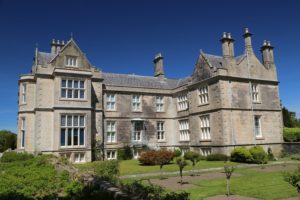
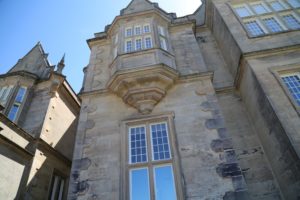
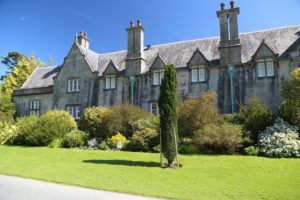
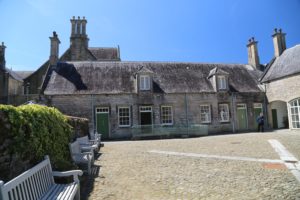
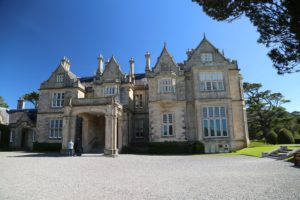
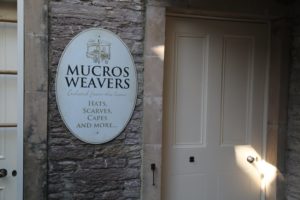

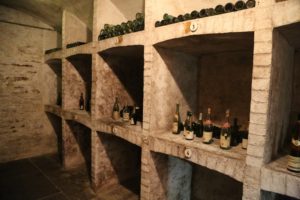
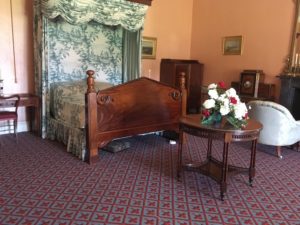
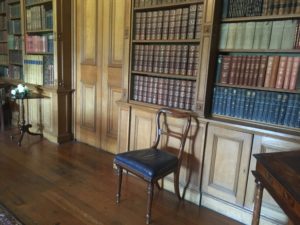
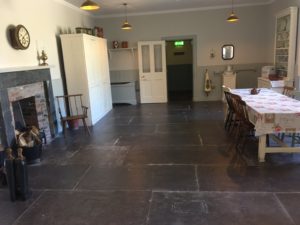
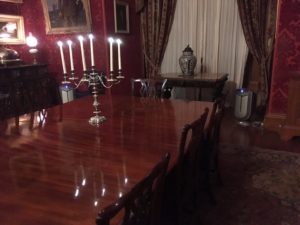
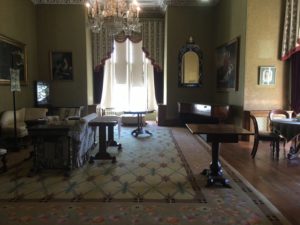
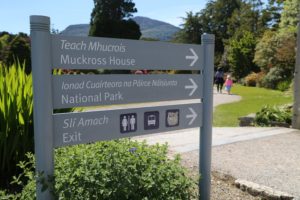
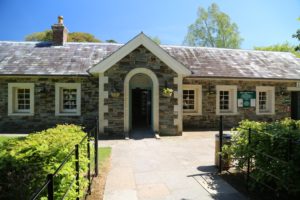
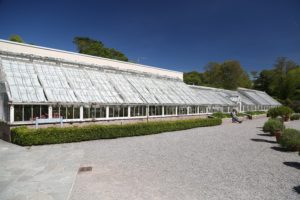
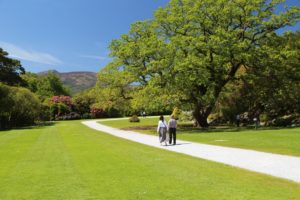
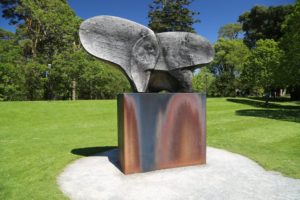
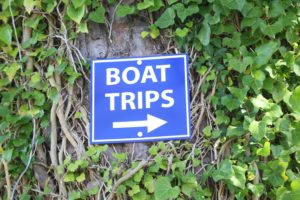
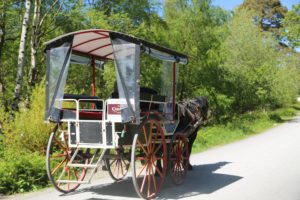
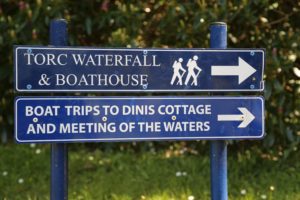
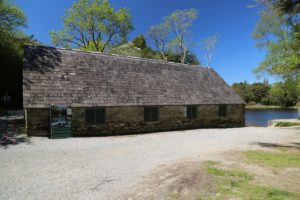
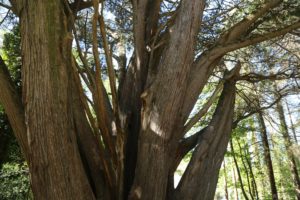
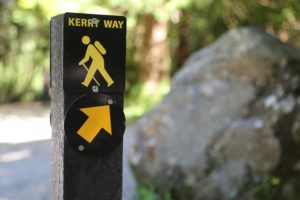

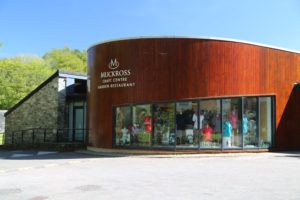
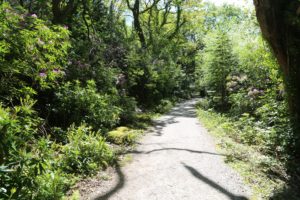
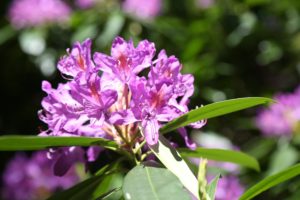
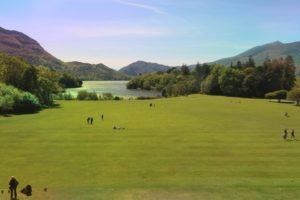
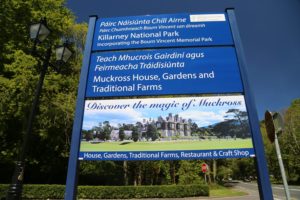
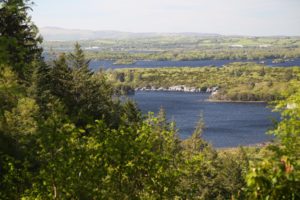
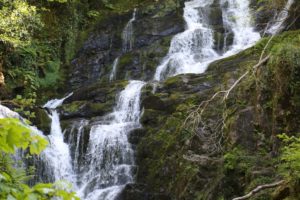
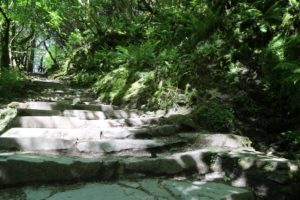
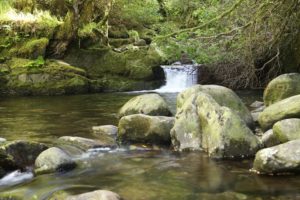
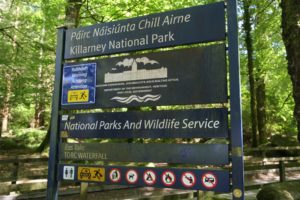
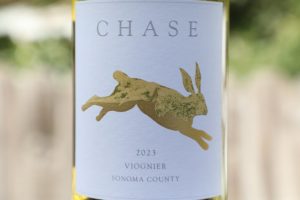
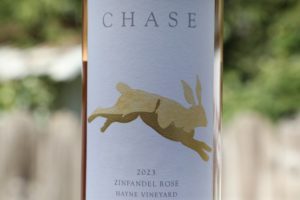
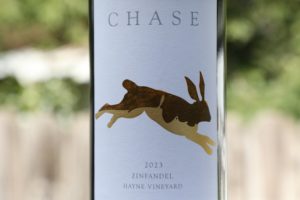
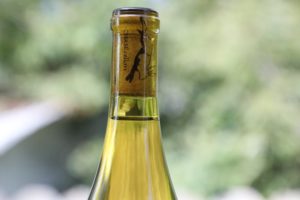
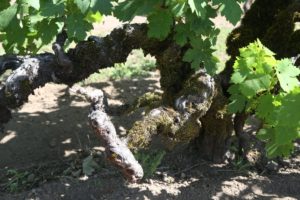
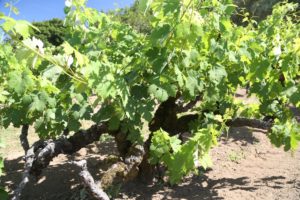
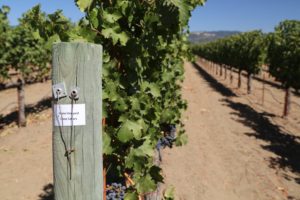

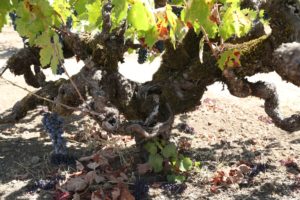
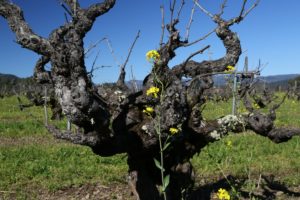
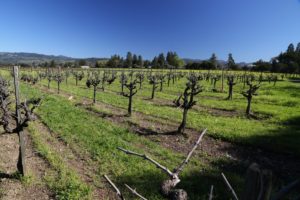
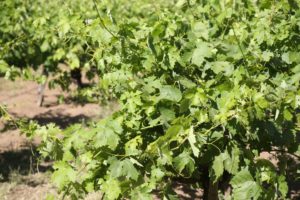
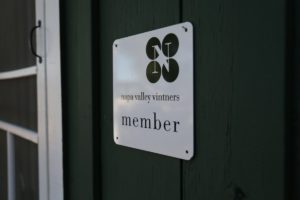
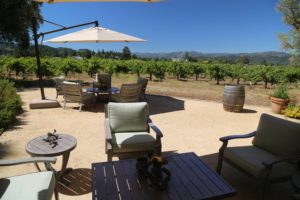
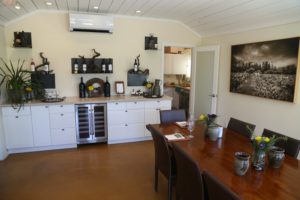
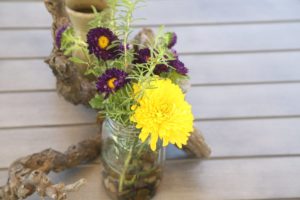
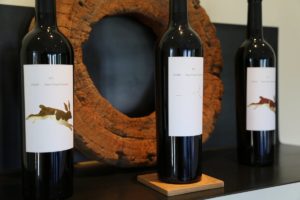
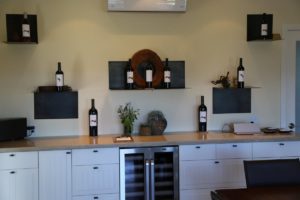
What was the name of the book by the starters of chase, we visited today
Brenda carlson
Brenda – I believe you are referring to the book titled, The Last Bonanza Kings. Sorry for the 2 year late reply, despite continuously racing around the valley updating the 1,000+ reviews on this site, things move very slowly around here when one is trying to visit every winery, producer and tasting room in the world-famous Napa Valley & plenty of “Napa” locations outside of the Napa Valley 🙂